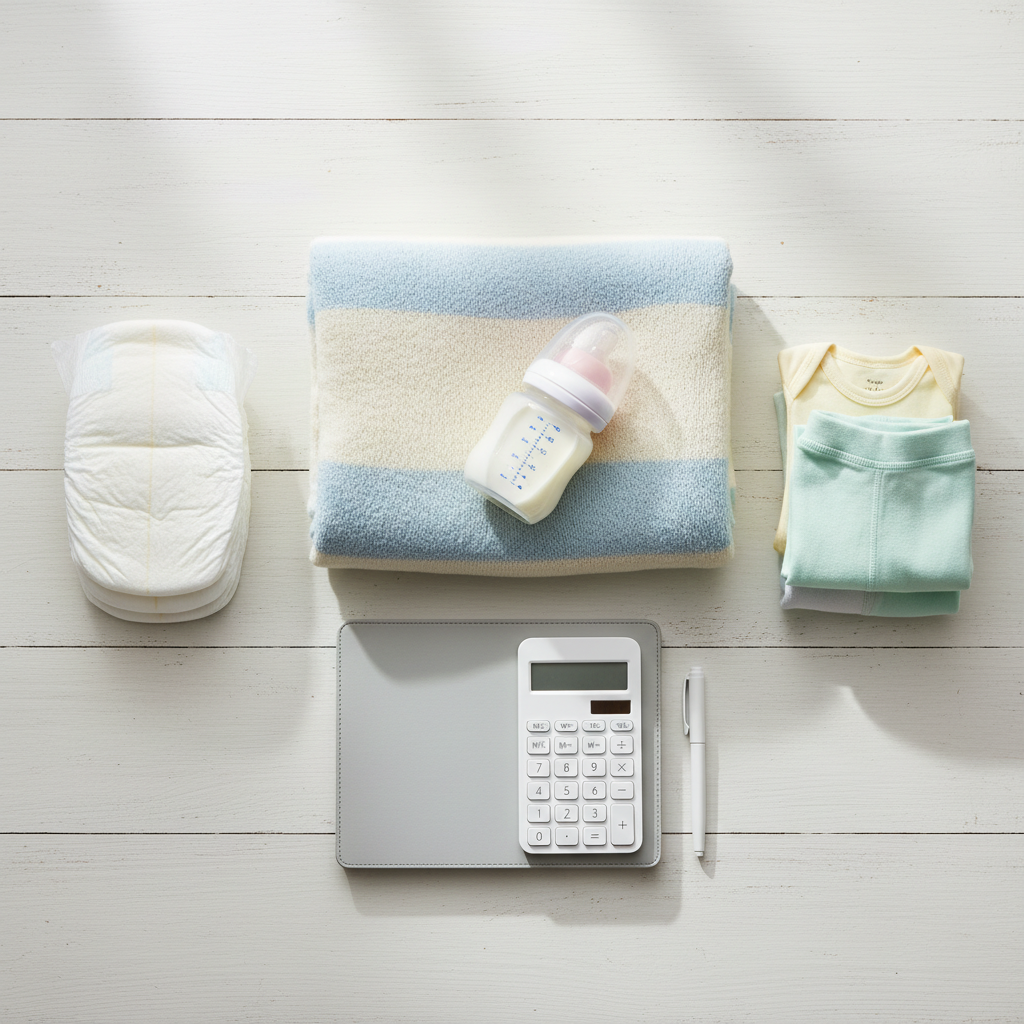
Budgeting for Baby’s First Year: Financial Planning During Your Second Trimester
Welcoming a baby brings immeasurable joy, alongside significant financial responsibilities that many new parents underestimate. During your second trimester, when pregnancy symptoms often stabilize, it’s an ideal time to develop a comprehensive financial plan for your baby’s first year.
Key Highlights
Here’s what you need to know about the financial aspects of your baby’s first year:
- The first year of your baby’s life typically costs between $20,000-$50,000, depending on your location and choices.
- Childcare represents the largest ongoing expense, potentially exceeding $1,000 monthly.
- Planning for both one-time purchases and recurring costs helps manage cash flow effectively.
- Reviewing health insurance coverage before delivery can prevent unexpected medical expenses.
- Building a dedicated baby fund and emergency savings during pregnancy provides financial security.
Understanding the Financial Impact

The financial reality of having a baby extends far beyond the initial purchases of a crib and car seat. First-year costs typically range from $20,000 to $50,000, with significant variation based on your location, healthcare coverage, childcare needs, and personal choices. This substantial investment often catches new parents off-guard, particularly during the 2nd trimester when attention shifts from managing early pregnancy symptoms to preparing for baby’s arrival.
Understanding these costs doesn’t mean you need to panic—it simply allows you to make informed decisions. The major expenses typically include hospital delivery costs ($10,000-$30,000 before insurance), childcare ($8,000-$20,000 annually), medical visits, and essential baby items like furniture, clothing, diapers, and feeding supplies. By recognizing these financial realities during pregnancy, you can take proactive steps to prepare your household budget.
Breaking Down Essential Expenses
When planning your baby budget, it helps to distinguish between one-time investments and ongoing expenses. One-time purchases include furniture (crib, changing table, dresser), travel equipment (car seat, stroller), and initial clothing and supplies. These items typically cost $2,000-$3,500 total, though smart shopping and accepting hand-me-downs can significantly reduce this figure.
Recurring expenses present the greater long-term challenge. Monthly costs include diapers ($70-$80), formula if not breastfeeding ($150-$200), baby food (eventually $50-$100), ongoing clothing needs, and additional household expenses like increased utilities and insurance premiums. Creating a monthly baby budget that incorporates these recurring costs provides a more realistic picture of your new financial reality. Parents experiencing pregnancy headaches second trimester may find that reducing financial stress through planning also helps alleviate some physical symptoms.
Childcare: Your Biggest Financial Decision

Childcare represents the single largest expense for most working parents, potentially consuming 20-30% of the household budget. During your second trimester, researching childcare options becomes essential financial planning. Full-time daycare centers average $972 monthly nationwide but exceed $1,500 in many urban areas. Nanny care typically costs $2,000-$3,000 monthly, while family daycare homes offer a middle-ground option.
Many families explore creative solutions to manage these substantial costs. These might include staggering work schedules between partners, negotiating flexible work arrangements, enlisting family help, or forming childcare co-ops with other families. The decision impacts not just your finances but your work-life balance and parenting approach, making it worth thorough consideration. Begin researching options in your area by the 2ns trimester to understand local availability, waiting lists, and exact costs for your planning.
Health Insurance Considerations
The birth of a child qualifies as a “life event” that allows you to modify your health insurance outside the normal enrollment period. During your second trimester, review your current health insurance policy to understand coverage for prenatal care, labor and delivery, and newborn care. Pay particular attention to deductibles, co-payments, and out-of-network providers that might affect your total costs.
Remember to add your baby to your health insurance within 30 days of birth to ensure continuous coverage. Some parents discover that switching insurance plans or adding supplemental coverage makes financial sense. Additionally, investigate whether your employer offers dependent care flexible spending accounts (FSAs) or health savings accounts (HSAs), which allow you to set aside pre-tax dollars for qualifying medical and childcare expenses. Making these decisions before your relationships change during the second trimester can help couples approach parenthood with greater financial confidence.
Building Your Baby Fund

Financial advisors typically recommend saving 3-6 months of living expenses before your baby arrives. During the 2nd month pregnancy and beyond, consider establishing two separate funds: a baby preparation fund for immediate purchases and an emergency fund for unexpected expenses. Even small, consistent contributions add up significantly over the remainder of your pregnancy.
Practical approaches to building these funds include creating a detailed pre-baby budget that identifies areas where you can reduce spending. Many parents-to-be find they can redirect money from dining out, entertainment, and non-essential shopping toward baby savings. Additionally, any cash gifts received at baby showers can supplement your preparation fund. Some parents also temporarily increase retirement contribution percentages before taking parental leave to “front-load” their annual retirement savings, ensuring financial goals stay on track despite income changes.
Smart Saving Strategies
Building a baby budget doesn’t mean you must purchase everything new or top-of-the-line. Focus spending on safety-critical items like car seats (always buy new) while economizing on clothing, toys, and equipment that babies quickly outgrow. Many parents discover that borrowing or purchasing gently-used items saves substantially without compromising quality or safety.
Community resources can also reduce expenses. Parenting groups often facilitate equipment and clothing swaps, while many libraries offer free children’s programming and toy lending. Tax benefits like the Child Tax Credit and dependent care credits will offset some costs after your baby arrives. Remember to also plan for quality time as a couple before baby arrives without overspending—simple date nights at home can nurture your relationship without straining your growing baby fund.
Balancing Financial Planning with Emotional Well-being
While financial preparation is essential, balancing practical planning with emotional well-being during pregnancy remains equally important. Financial stress can compound the physical discomforts of pregnancy, particularly if you’re experiencing challenges during your pregnancy journey. Creating a structured plan often alleviates anxiety by transforming vague financial concerns into specific, manageable steps.
Remember that perfect preparation isn’t possible, and many parents successfully navigate the first year with far less than the ideal savings amount. The goal isn’t to eliminate all financial challenges but to anticipate and prepare for the most significant ones. Sharing financial planning tasks between partners can strengthen your relationship and ensure both parents feel confident about the family’s financial direction. By addressing these practical matters during your second trimester, you create space to focus on the emotional and physical aspects of welcoming your baby in the months ahead.
